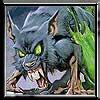I've looked at some articles and the Wiki on software versioning, and read that the numbers basically mean what you want it to mean. Still being in the hobbyist category of game developer, I'm asking for a professional opinion on how games should be versioned as they progress.
Personally, I use the 2-number system of Major.Minor progress. My prototypes go from 0.1 to 0.whatever until I think the game is in a playable state where I am willing to share it with others to get some feedback. That, to me, is 1.0. Bug fixes and feature usually creep come next while I hunt for art and music talent. That's where most of my enthusiasm loses steam. I'm thinking that if I ever got the art in place, that would be a +1 to my Major version. Same with music. So my beta release would be 3.0? That seems odd to me in a way that I can't put my finger on it. (Besides it being an odd number, wiseguy!)
Again, I found no hard and fast standard to follow when it comes to versioning my games. And I like structure. So what do the pros do? Indie or otherwise. Is there a generally accepted system to follow?









